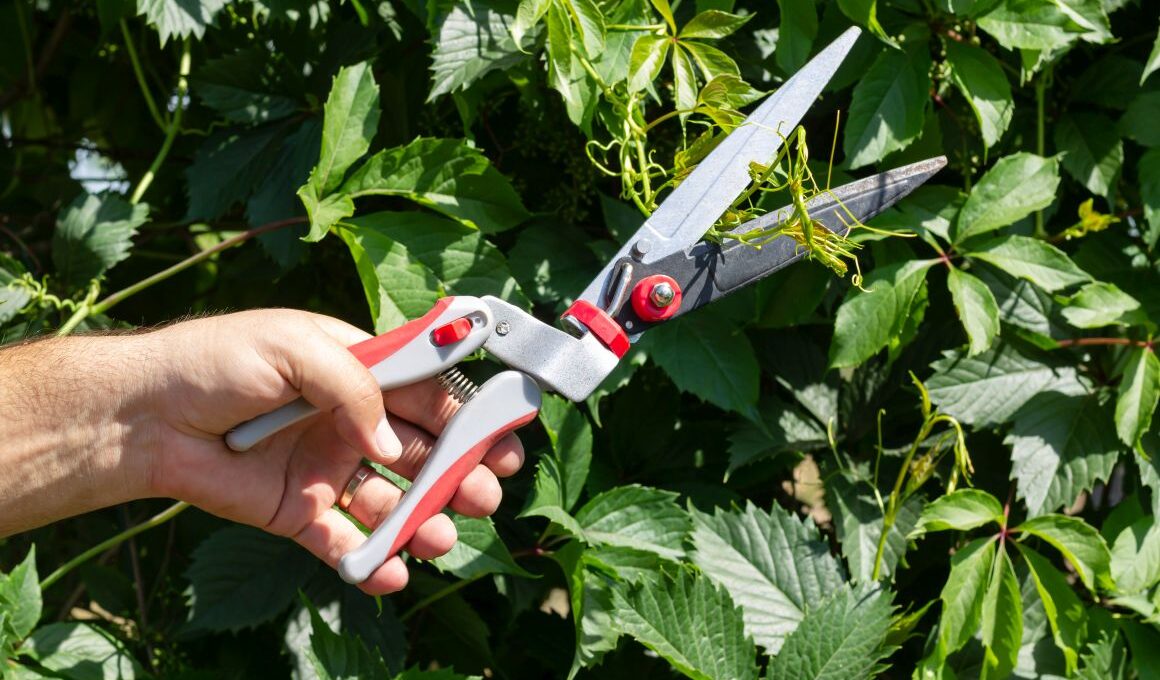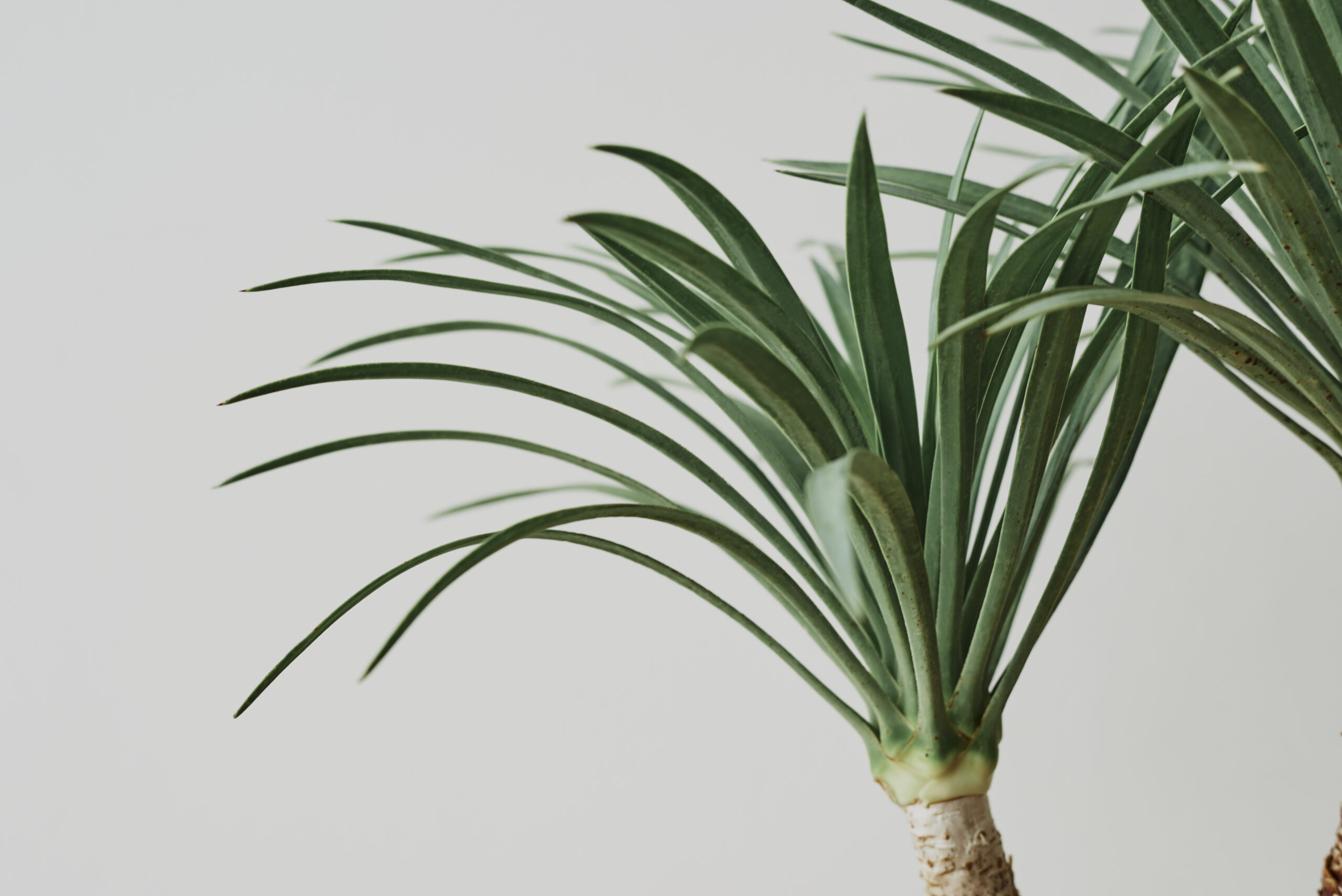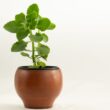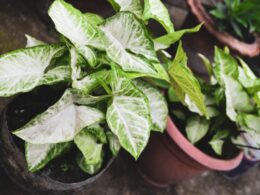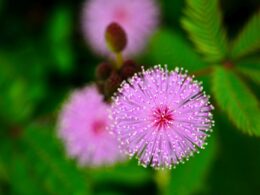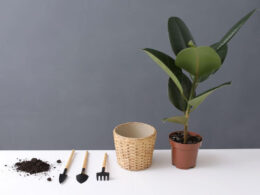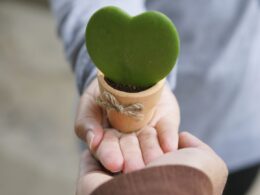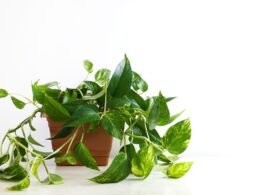We will cover topics such as watering, light, propagating, fertilizing, and more! So if you are looking for tips on how to take care of an ivy plant, then read on!
English Ivy Plant Care
Most people know English Ivy (Hedera Helix) as that pesky vine that’s always trying to take over the garden. But did you know that with a little bit of care, English Ivy can be a beautiful and low-maintenance houseplant? Here are a few tips to keep your English Ivy happy and healthy:
- Give them bright, indirect light. Ivy does best in a spot that gets plenty of light, but isn’t in direct sunlight. A north-facing windowsill is ideal.
- Water when the top inch of soil is dry. Ivy doesn’t like to be too wet or too dry, so aim for somewhere in the middle. Water thoroughly, then allow the soil to drain before putting the plant back in its pot.
- Feed ivy plants monthly during the growing season with a balanced fertilizer. You can find this at your local nursery or garden center.
- Ivy doesn’t like to be too wet or too dry, so aim for somewhere in the middle. Water thoroughly, then allow the soil to drain before putting the plant back in its pot. Allow the top inch of soil to dry out between watering. This is especially important in winter, when Ivy goes into semi-dormancy and needs less water.
- Pruning isn’t necessary, but if you want to keep your ivy plant tidy, you can trim it back in spring. Just use sharp scissors or pruning shears and cut ivy vines back to the desired length.
If your green starts to look a little sad, don’t despair! With a little ivy plant care, it will be back to its old self in no time.
What Soil Is Best for Ivy Plant Care
If you’re looking to add some English Ivy to your home, it’s important to create the perfect environment for your new plants. English Ivy thrives in well-drained soil that is high in organic matter. The best way to achieve this is to mix equal parts peat moss, perlite, and vermiculite. This mixture will provide the drainage and aeration that English Ivy needs to grow vigorously. In addition, be sure to plant your Ivy in an area that receives partial sun to shade. Too much direct sunlight can scorch the leaves, while too little light will cause the plants to become leggy and weak. By following these simple tips, you can create the perfect conditions for your English Ivy to thrive.
Humidity
English ivy plant care requires high humidity levels to thrive. If the humidity is too low indoors, the leaves will start to turn brown and dry up. There are a few things you can do to increase the humidity level around your ivy plants:
- Put the pot on a tray of wet pebbles. The water will evaporate and create a humid environment for the plant.
- Group ivy plants together. This will create a microclimate and increase humidity levels.
- Use a humidifier in the room where your ivy plants are.
You need to know that too much humidity can cause root rot! In case that happens to your indoor plant, try vinegar and water or fungicide.
Ivy Plant Common Problems
Common problems of ivy plants are issues with the foliage, such as yellowing leaves, brown spots, or leaf drop. These problems can be caused by a number of factors, including nutrient deficiencies, pests, or diseases. One of the most common issues is Ivy Leaf Spot, which is caused by a fungus that infects the leaves and causes brown or black spots to form. This problem is often exacerbated by too much moisture, so it’s important to water ivy plants only when the soil is dry. Another common issue is aphids or spider mites which are small insects that feed on plant sap. Aphids can cause leaves to turn yellow or stunt plant growth. To control them, you can use an insecticidal soap or neem oil. We have also found that ladybugs are effective at controlling aphids, as they will feed on them.
Care Tips for Your Dying Ivy
Do you have an English Ivy that’s not looking so great? Here are a few ivy plant care tips to revive it:
- Check the light levels and make sure it’s getting enough indirect sunlight. If it’s in direct sunlight, the leaves will start to turn yellow and brown.
- Make sure you’re watering it when the top inch of soil is dry. Water thoroughly, then allow the soil to drain before putting the plant back in its pot.
- Feed ivy plants monthly during the growing season with a balanced fertilizer. You can find this at your local nursery or garden center.
Is the English Ivy Safe for Pets?
While English ivy is a beautiful plant that can make any home feel more like a castle, it’s important to remember that it is poisonous to pets. If your cat or dog ingests even a small amount of the leaves, they can suffer from vomiting, diarrhea, and abdominal pain. In severe cases, they may also experience difficulty breathing, seizure, and paralysis. If you suspect that your pet has ingested English ivy, it’s important to take them to the vet immediately. While there is no cure for Ivy poisoning, early intervention can help to improve your pet’s prognosis and increase their chances of making a full recovery.
As you can see, there are a few things to keep in mind when it comes to ivy plant care. But if you follow these tips, you should have no problem keeping your ivy healthy and happy! Thanks for reading!





